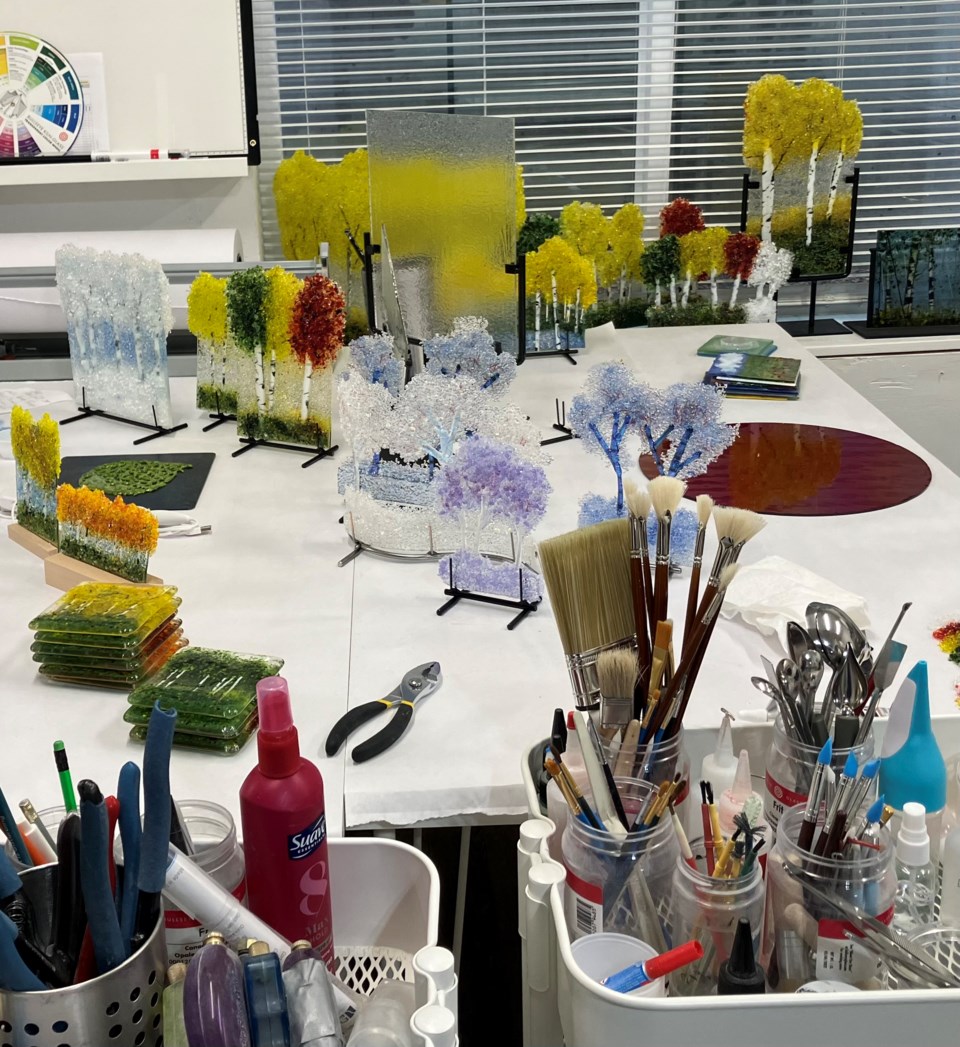Arlyss Grosz proves that using your right brain can keep you sharp, vibrant and strong. Grosz is a thriving glass artist with an amazing in-home workshop in southwest Longmont. Eight years ago, her husband Dick helped her customize their basement. They have been married for 60 years and have created a clean, bright-white studio space with two kilns, drawers of glass, shelves of supplies and display areas.
Arlyss Grosz began her creative path after retiring from a career in nursing and higher education. She said she chose glass as her primary medium of expression because “there are so many options working in glass that there is always something new to explore.”
Her glass creations are sold at The Evergreen Gallery and the Denver Art Museum. Although Arlyss Grosz continues to make utilitarian objects like coasters, she spends most of her time creating art for art’s sake. Her primary style is to fuse glass pieces to capture snippets of Colorado’s trees and mountains. Arlyss Grosz’ 3D trees are characterized as eclectic and vibrant in color. Her stands of trees can be upwards of 20” and are supported by custom iron frames.
She uses yellow, green, orange, red, black, white and clear colors to depict various seasons. Her trees are almost like a contemporary 3D version of a section from a Georges Suerat painting. To add movement, Arlyss Grosz sometimes creates undulating panels of trees. Her newest style is sandwiching colors and shapes in half inch blocks that are approximately 6” x 9” to create landscapes with greater depth.
Fusing glass occurs in a kiln roughly between 700 °C (1,292 °F) and 820 °C (1,510 °F). Tack fusing occurs at lower temperatures. Full fusing occurs at higher temperatures and Arlyss Grosz often did full fusing early in her career when she layered complementary colors together to create beautiful sheets of glass. She then laid them atop specially made forms and re-heated the glass at a lower temperature to “slump” the glass to make lamp shades. The colored striations came alive when illuminated.
Arlyss Grosz studied with local, regional, and national glass artists. While she uses techniques that go back over 2,000 years to Egypt and Rome, she also develops her own techniques like playing with white upon white to capture snow.
According to a 2010 study described in the American Journal of Public Health, “There is evidence that engagement with artistic activities, either as an observer of the creative efforts of others or as an initiator of one's own creative efforts, can enhance one's moods, emotions, and other psychological states as well as have a salient impact on important physiological parameters.”
Arlyss Grosz stated, “Working with glass has definitely kept my mind active. I have to use math and physics to estimate volume and flow of the glass.”
Whether thinking about the atoms in glass or selecting the right shade of white for an Aspen trunk, Arlyss Grosz activates the left and right sides of her brain to stay youthful.



